 St. Patrick’s Day reminds me I’m a product of Catholic schools in New York City. The first nine years were because my parents told me so; the last four were by choice. The result was being greatly influenced by the thirst for knowledge central to the core of the Augustinian and Marist traditions. A summarizing of that thirst is the need to seek knowledge, particularly the truth. In order to accomplish this, you have to remind yourself often to look at the entire scope of a project – not just the part central to whatever fight you hold dear.
St. Patrick’s Day reminds me I’m a product of Catholic schools in New York City. The first nine years were because my parents told me so; the last four were by choice. The result was being greatly influenced by the thirst for knowledge central to the core of the Augustinian and Marist traditions. A summarizing of that thirst is the need to seek knowledge, particularly the truth. In order to accomplish this, you have to remind yourself often to look at the entire scope of a project – not just the part central to whatever fight you hold dear.
Perhaps that’s why I’ve been laughing at some of the commentary about the dislike of the Pepsi sign. Among the popular arguments presented against those speaking out about it is that there are bigger issues affecting the city of Birmingham. After all, it’s a little ridiculous to be all worked up over a sign paid for by a long-time Birmingham-based business advertising a New York-based multi-national business founded in North Carolina, right? (Granted, that’s the least of PepsiCo’s problems right now…)
Yes, here are a lot of major issues facing the general population of Birmingham. However, if you think about the original reason for the sign it is covering, its placement, and its visibility, you realize it speaks more to the pecking order of major issues affecting the region. At least, that’s why I’ve been vocal about the sign. I’ll explain:
Those finding issues with the installation of the advertisement probably wouldn’t be as vocal as they are if the skirting of city law wasn’t flaunted in their faces in the form of a party overlooking the city. While forgotten in recent years, the display board it covers was installed to brag about the potential for Birmingham as part of its centennial. It leaves many, including myself, wondering if the choruses wouldn’t have been muted ever so slightly if the money spent on this unveiling were publicly shared with one of the city’s missions or outreach programs, tackling an issue of significance directly. Well?
The sign is visible from much of the city proper, especially areas west of downtown. When poverty grips approximately 30% of our city (or more based on the screenshot of an interactive map created by The New York Times earlier this year), does it give them hope as they see a sign installed for an undisclosed amount of money advertising one of many soft drinks that lends itself to the state’s ranking among states fighting obesity (regardless if it places us in the top 5 or farther down the upper reaches of that kind of list)?
When quality affordable housing is not a reality for many and the ability to find some in an area that allows you to get to work and have access to the basics is increasingly hard for citizens, what does that sign say to them? How many homes could be renovated or built with those funds? Whether intended or not, and regardless of where the conversation is taking place – fellowship halls, barber shops, libraries, parks, living rooms, or Facebook – discussions are taking place that vocal online participants aren’t as plugged into as we may believe.
Maybe the sign serves as a more powerful mirror to the community about its priorities, placing corporate objectives above the social needs of the city? What if you’re so concerned with fighting against “the man” that you blow off people willing to help with some piece of a solution? Could a removal of the advertisement include monies being given to those organizations and initiatives working to battle the bigger issues? The need to polish a public image can lead to some interesting partnerships, but we may not find out.
Recent weeks have reminded me of just how polarized a community can become, potentially keeping people from realizing they might be working towards the same goals. The opportunity for those partnerships to be forged and acted upon become harder when antagonistic baiting of a captive audience becomes more entertaining to some instead of digging a little deeper to find out how others may tick. There are far more constructive ways to make noise and hold up that mirror than saying there’s only one way to fight a battle. The city will move forward in spite of the nitpicking. It could move a lot farther if it was more civil. We’d also do a lot better of we looked at the entire situation when thinking about how to tackle one piece. Isolating yourself from being a true part of the solution is a sad thing indeed.
Maybe it’s time to rewrite former UAB president Joseph Volker‘s famous quote? Instead of dreaming “too-little dreams,” we need to start accomplishing more and more goals. The pointing, waving, and name-calling is doing more to destroy potential progress before it even begins, though it’s being done in the name of raising awareness. Awareness is needed, but so is the need to recognize how to act like adults and agree to disagree.
Otherwise, we do a great disservice to Birmingham if we continue to isolate, name-call, and posture too childishly.
André Natta is the stationmaster of bhamterminal.com.





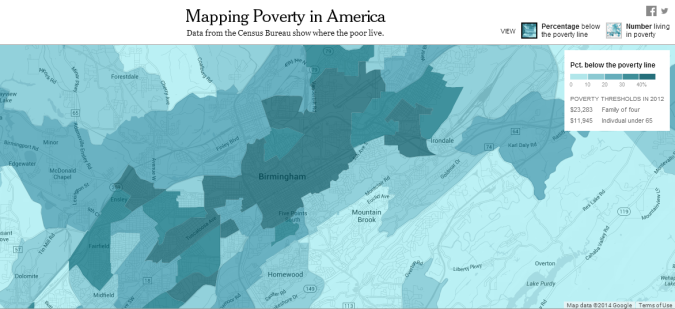
 There’s been a great deal of conversation about the proposed lease agreement that would see the City of Birmingham occupy more than 263,000 square feet of space in
There’s been a great deal of conversation about the proposed lease agreement that would see the City of Birmingham occupy more than 263,000 square feet of space in 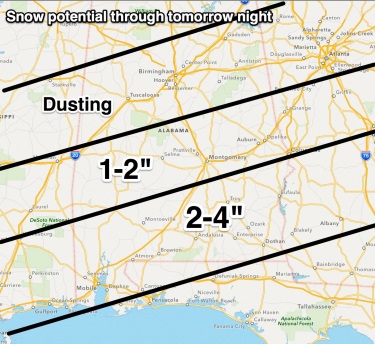 The image to your left is representative of the graphics used by many media outlets in north central Alabama on Monday evening. As you can see, Birmingham and the majority of its surrounding area was only forecast to see a “dusting” of snow. The area that was predicted to receive the brunt of the storm was the southern portion of the state (mostly areas south of Demopolis),
The image to your left is representative of the graphics used by many media outlets in north central Alabama on Monday evening. As you can see, Birmingham and the majority of its surrounding area was only forecast to see a “dusting” of snow. The area that was predicted to receive the brunt of the storm was the southern portion of the state (mostly areas south of Demopolis), 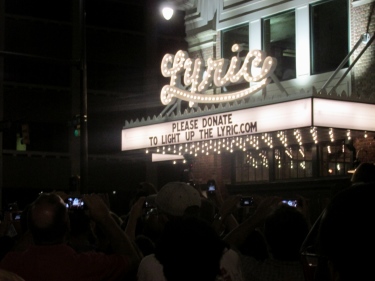 Friday night in Birmingham’s theater district was the kind of event more people will claim to have attended than were actually there in the coming years. Considering there were at least 1,000 people gathered in Birmingham’s theater district to watch
Friday night in Birmingham’s theater district was the kind of event more people will claim to have attended than were actually there in the coming years. Considering there were at least 1,000 people gathered in Birmingham’s theater district to watch 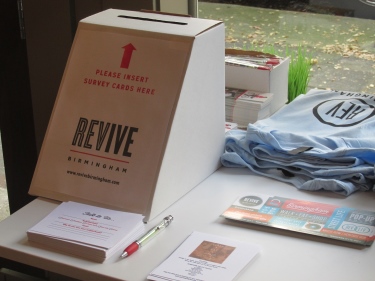
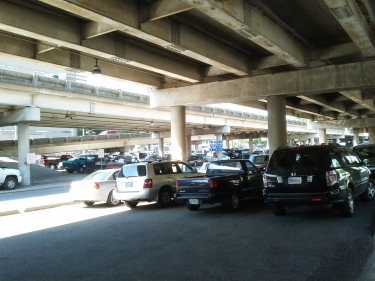 Yesterday I decided to point to a specific city that’s actually tackled an inner-city interstate replacement and
Yesterday I decided to point to a specific city that’s actually tackled an inner-city interstate replacement and 

Why is the downtown Publix really a game-changer?
Now, I’ve lived in the greater downtown area since 2004, and I’ve always had as few as four and as many as six major options available to choose from within 2 miles, but I had to drive to them. When people ask me “Where and how do you get groceries?” I admit I’ve long ago started replying by asking them, “Well, where and how do you get yours?” I get a stunned look, but most times they seem to get what I’m saying. That said, it’s not an option readily or easily available to a significant number of our city’s residents.
This leads to my first reason why it’s a game-changer:
It’s more about WALKING now than DRIVING. Yes, there’s a parking deck that will sit between the ground floor space and the 36 “loft-style” apartments planned for the top the building. The vehicles using these spaces though will be off-street and out of sight. The idea of needing to circle forever to find a spot or the installation of a surface parking lot to handle capacity doesn’t even come up in conversation – and that’s a great thing. It suggests developers realize there will be enough people within walking distance to support its operation. It takes away reliance on an automobile to make a development like this one work.
It means it should be easier to get other national and regional retailers to consider locating a business downtown. It also makes it easier to get those same retailers to start looking at options in neighborhoods throughout the city. It could potentially make the issue of placing parking immediately adjacent to their business less of a sticking point. Dare it be suggested it could also be the first step toward a re-write of the city’s parking regulations and a rethinking of its minimum requirements?
It’s downtown. Actually, this may be an even bigger issue for me and one I’m excited about watching evolve. The proposed building is sitting along 20th Street South. When I first moved here nearly ten years ago, I referred to that area as being downtown while having a conversation with a native; I was chastised immediately because “it was not downtown, it was Southside. Downtown starts on the other side of the tracks.”
It was weird, as most New Yorkers refer to pretty much all of Manhattan as “downtown” no matter which of the other four boroughs you live. I’d also moved here after working for an agency charged with the revitalization of “greater Downtown” Savannah, not just its famous historic district. As a result, I’ve long considered the areas surrounding the city center part of greater downtown Birmingham. It makes sense especially when you get a chance to see just how small the expanded area still is in relation to the rest of the city.
The announcement of this grocery store lends itself to a new approach involving population growth in the urban core focused on eventually seeing people choosing to live in the single-family home dense portions of Druid Hills, Fountain Heights, and Norwood (in addition to others like Titusville, Smithfield, and College Hills) after spending a couple of years living in an apartment located nearby in the city center. Every major news outlet in the city referred to the project’s location area as downtown, suggesting the shift in perspective (one long championed by REV Birmingham and its predecessors) is finally starting to happen. The change in perspective also means a realization about the choices available to someone thinking about their next move.
The changes that come as a result of this and other projects will be quick. The changes at face value will be good for the city. The question right now as we get ready to start watching this happen is “Are we ready for what we’ve been asking for all of these years?”
André Natta is the stationmaster for bhamterminal.com.
Leave a comment
Posted in Birmingham, Commentary, development
Tagged downtown, game-changer, grocery store, Publix, UAB